Umbrella plants are famous for their graceful glossy leaves that form rounded, umbrella-like clusters.
You wouldn’t say that these are specimens people cultivate for the flowers – it’s the foliage that really shines.
But they are sometimes known as “octopus plants,” which refers to the long tentacles of blossoms that the plant produces when it’s grown in the right conditions.
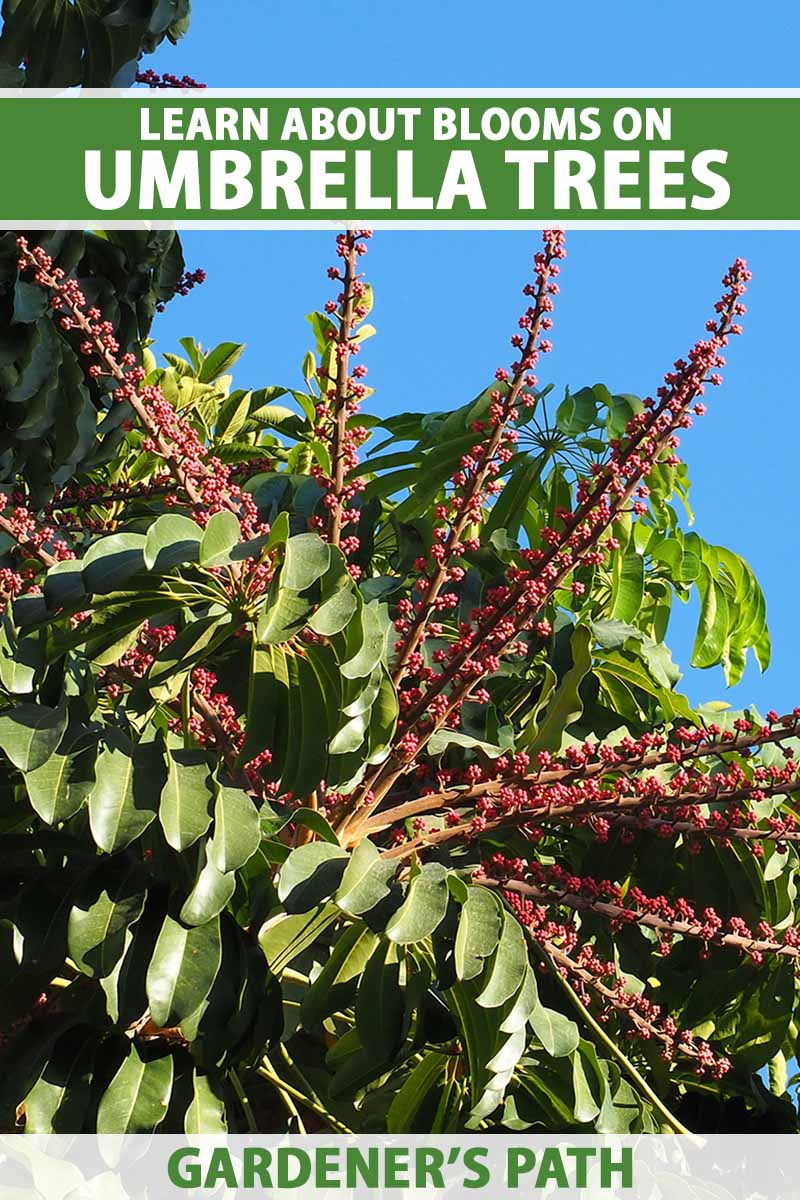
We link to vendors to help you find relevant products. If you buy from one of our links, we may earn a commission.
These blossoms can be colorful and might be numerous enough to absolutely smother the plant, providing an exciting display that many people don’t even realize is a possibility.
If you’d like to know all about umbrella tree blossoms, that’s what we’ll be discussing in this guide.
Here’s what I’ll cover:
What You’ll Learn
Species commonly known as umbrella plants or umbrella trees used to all be classified in the Schefflera genus, but most of them have recently been reclassified as Heptapleurum.
You can learn more about umbrella trees in our growing guide.
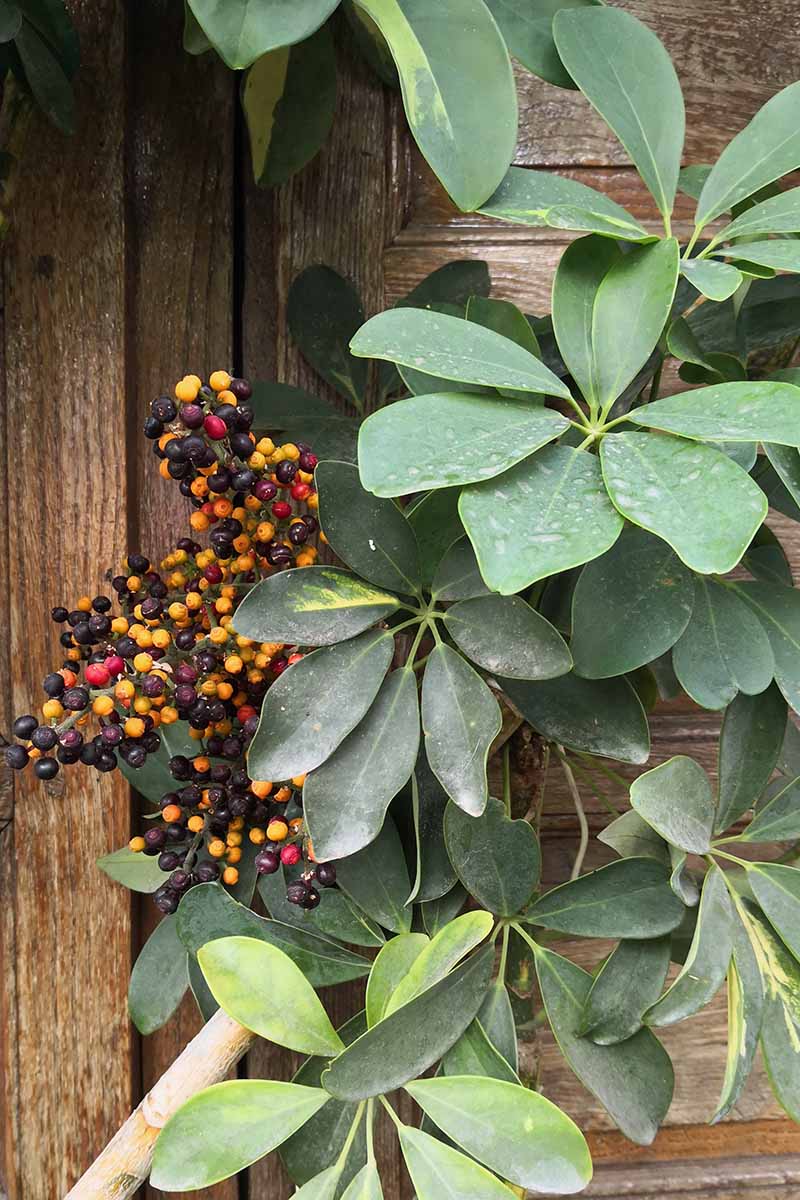
First, let’s make one thing clear. Do all umbrella plants bloom?
All Schefflera and Heptapleurum species can produce flowers. When the flowers fade, round drupes in shades that vary from green to nearly black form. Inside of these are the flattened seeds.
With that out of the way, let’s talk about the specifics.
What Do Schefflera Flowers Look Like?
Schefflera plants produce inflorescences, which are flower heads composed of multiple small blossoms held by stems and bracts.
They can appear to be one large flower, as is the case with dandelions, or they can look like lots of little flowers clustered together.
In the case of umbrella trees, the inflorescence is usually a long panicle of spike-shaped stems covered in tiny blossoms that you’d need to get really close to see individually.
The panicles are generally about a foot long and might have small hairs on the stems.
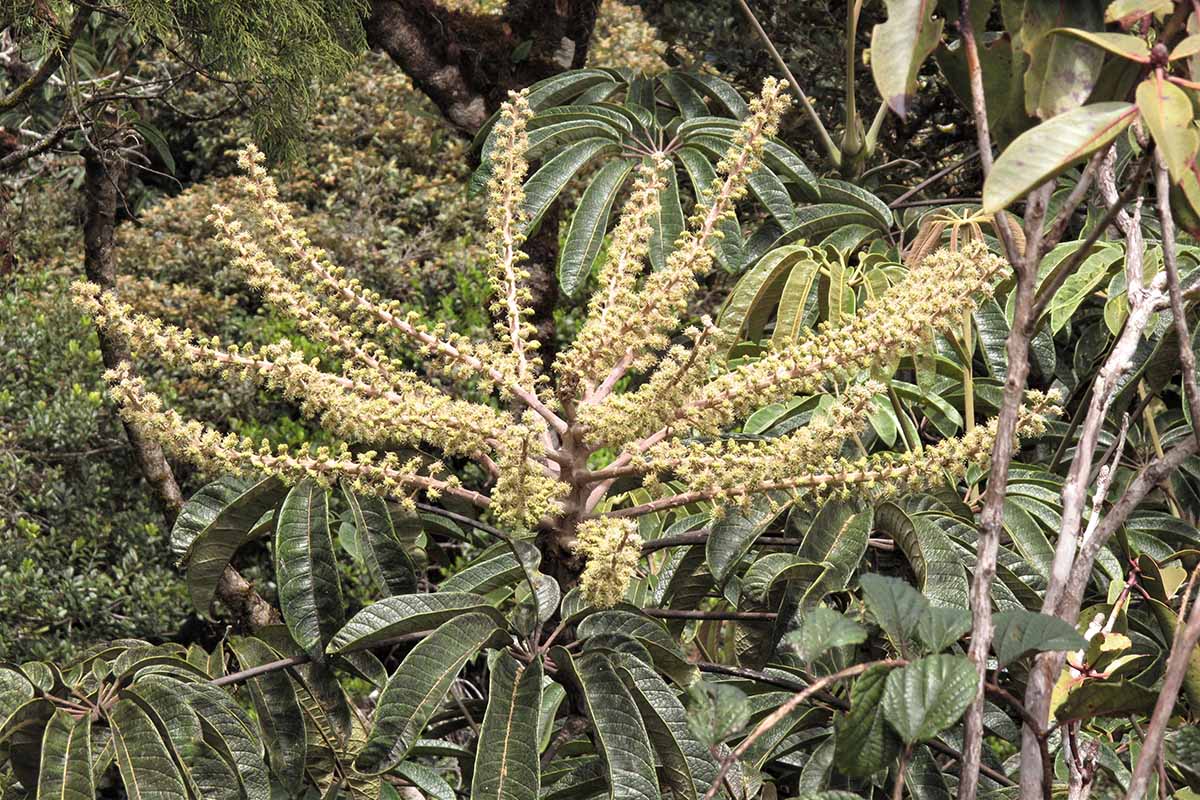
On some of the common houseplant species like H. arboricola and S. digitata, the panicles have small, round clusters of flowers, each measuring up to half an inch in diameter along the stem.
Each cluster has about ten white, yellow, or green blossoms. These little clusters are called umbellules.
If you look closely you can see that each individual flower has five petals surrounding five stamens and seven stigmas. The petals and stamens are contained by a tiny green calyx that is so small it’s difficult to see.
Other species, like H. actinophylla, have similar inflorescences, but they’re bright pinkish-red instead and can be up to three feet long.
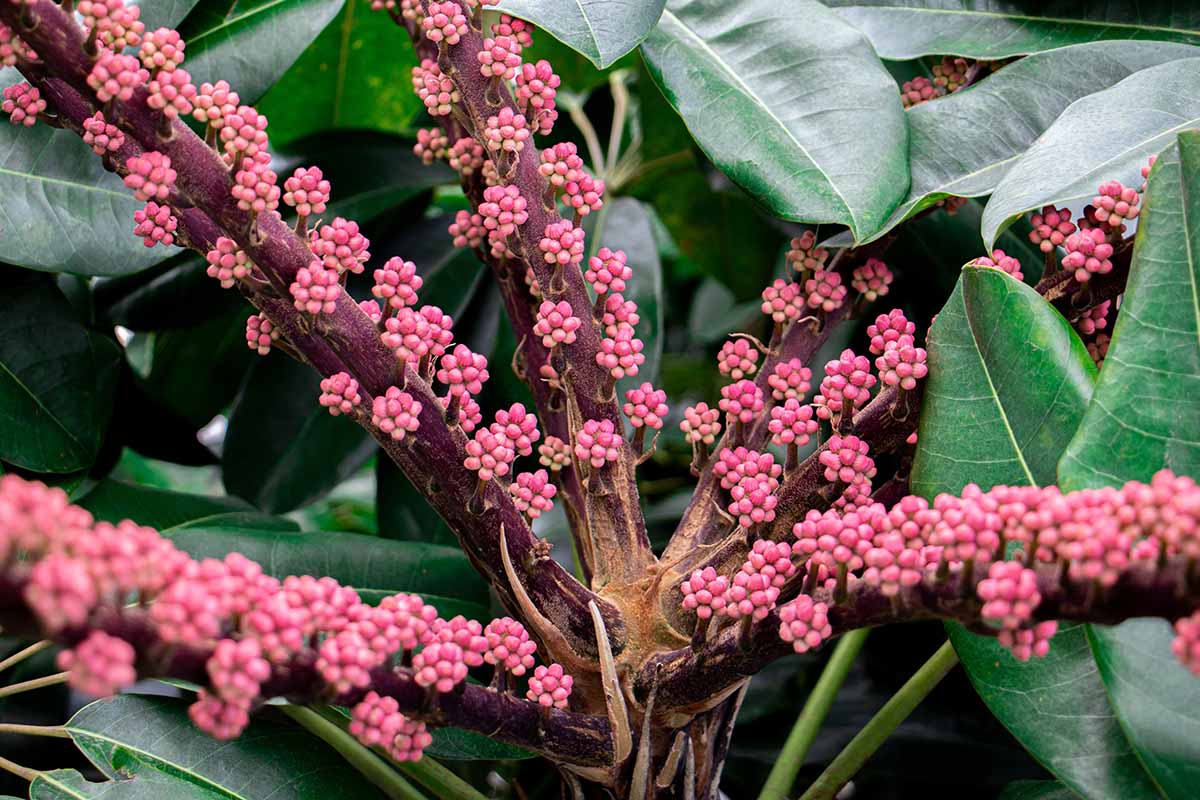
As the flowers mature, the petals will fall, but the stamens will remain a bit longer before they, too, drop.
When in bloom, the stems can be covered in inflorescences.
Best Conditions for Flowering
If you’re growing your specimen indoors, it’s unlikely to flower. That’s because these plants need lots of light to produce blooms.
Any plant that doesn’t receive full sun – eight hours or more of direct sun – probably won’t bloom.
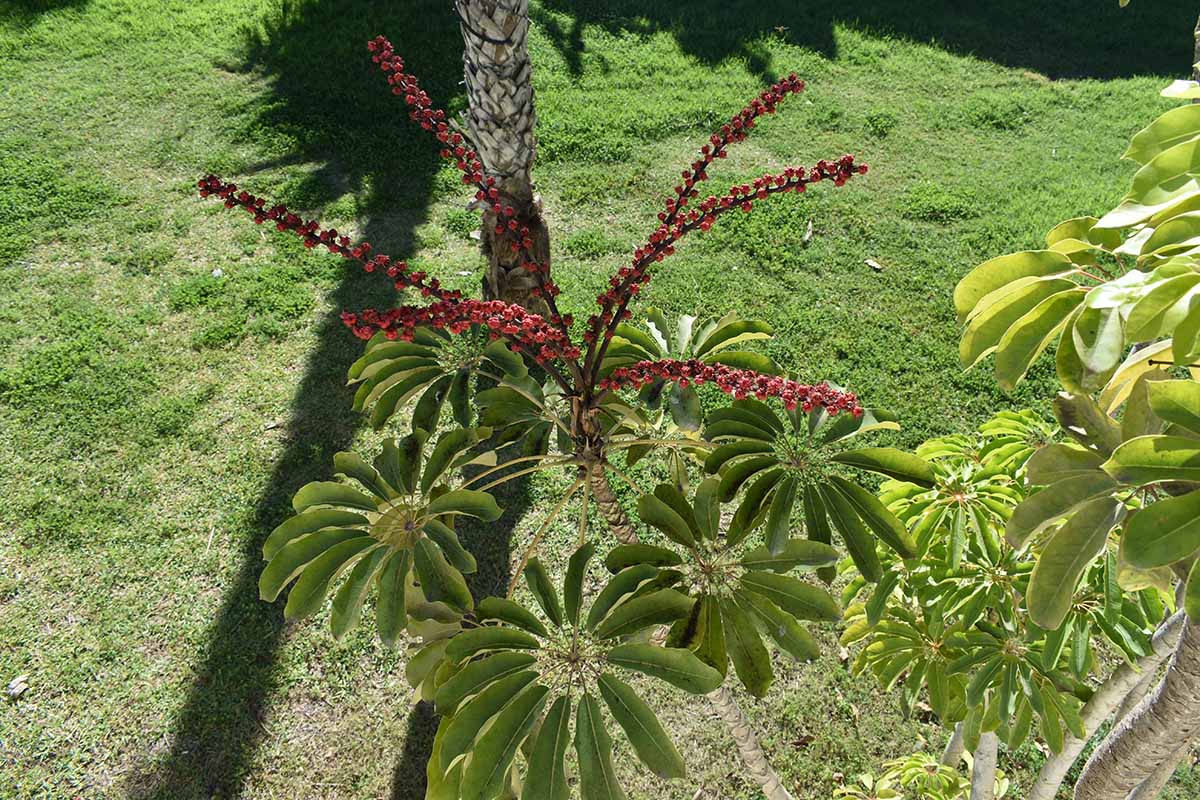
With enough light, umbrella trees will send out flowers in the summer.
The other requirement for flowering is warmth. Ideally, keep the plant at temperatures between 65 and 90°F. They can handle lower temps, but this is the ideal range for flowering.
In other words, those in USDA Hardiness Zones 10 to 12 who can grow their schefflera plants outdoors are likely to see flowers.
If you don’t live in one of these Zones, you can fake it. Keep your schefflera indoors in as much light as possible during the cold months, and then take it outside when the temperatures are consistently above 55°F.
You’ll need to harden off your houseplant before you set it outside full-time.
I find that older houseplants need longer hardening off periods than young seedlings, so plan to do this over the course of about two weeks. Take the specimen outside and set it in full sun for 30 minutes and then bring it back in. Add 30 minutes each day for the next 13 days.
Within a few weeks or so, hopefully, you’ll have blooms!
Bring the plant back indoors once the nighttime temperatures drop to around 55°F.
How to Care for Umbrella Trees in Bloom
When your umbrella plant produces flowers, you don’t need to do anything but enjoy them while they’re blooming. After the petals drop, you have a choice.
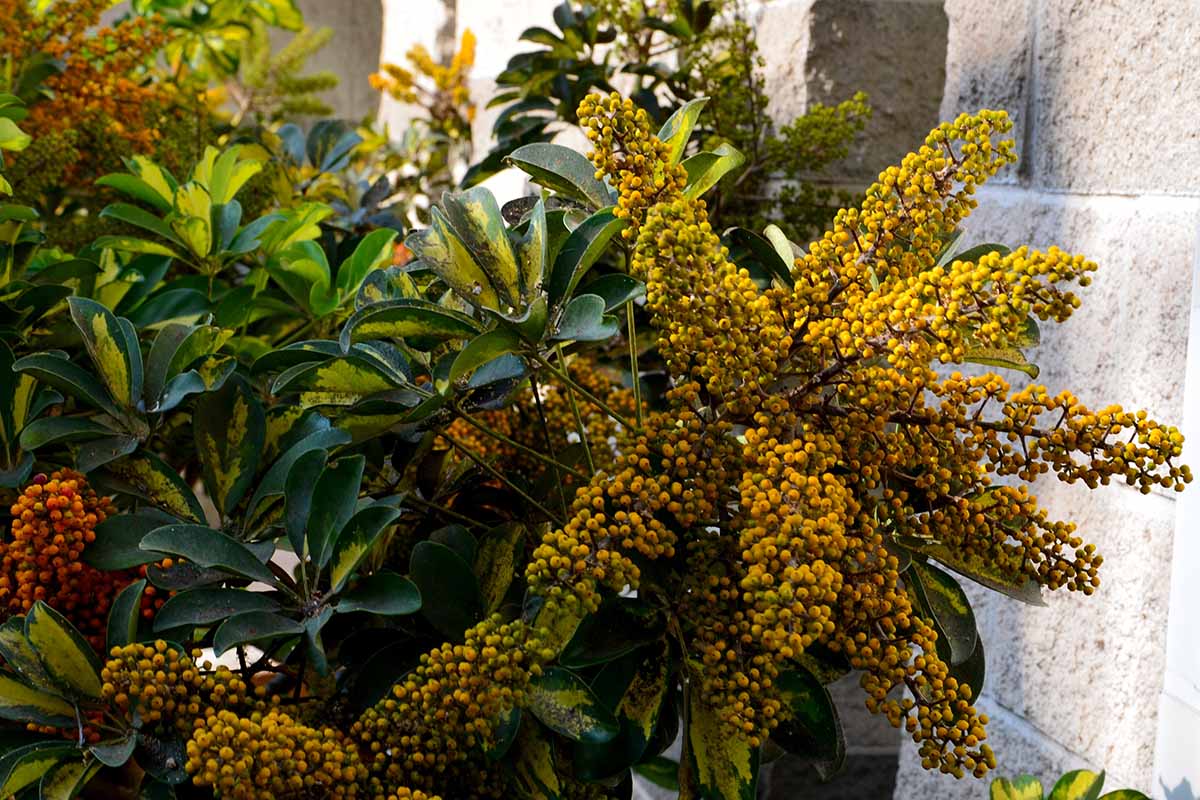
You can choose to either cut off the flower stalks at the base, or you can leave them in place and let the blossoms develop into berries.
When these drop, they will make a little bit of a mess, so you can opt to cut off the stalks of berries before they drop, if you want.
If you have your plant indoors while it’s blooming, it’s best to remove the flower stalks to avoid the mess, but it won’t harm the plant either way.
Flowers are Always a Welcome Addition
Umbrella plants will always be beloved for their beautiful leaves, but they deserve accolades for the flowers, too. Given the right conditions, anyone in any growing Zone can enjoy them.
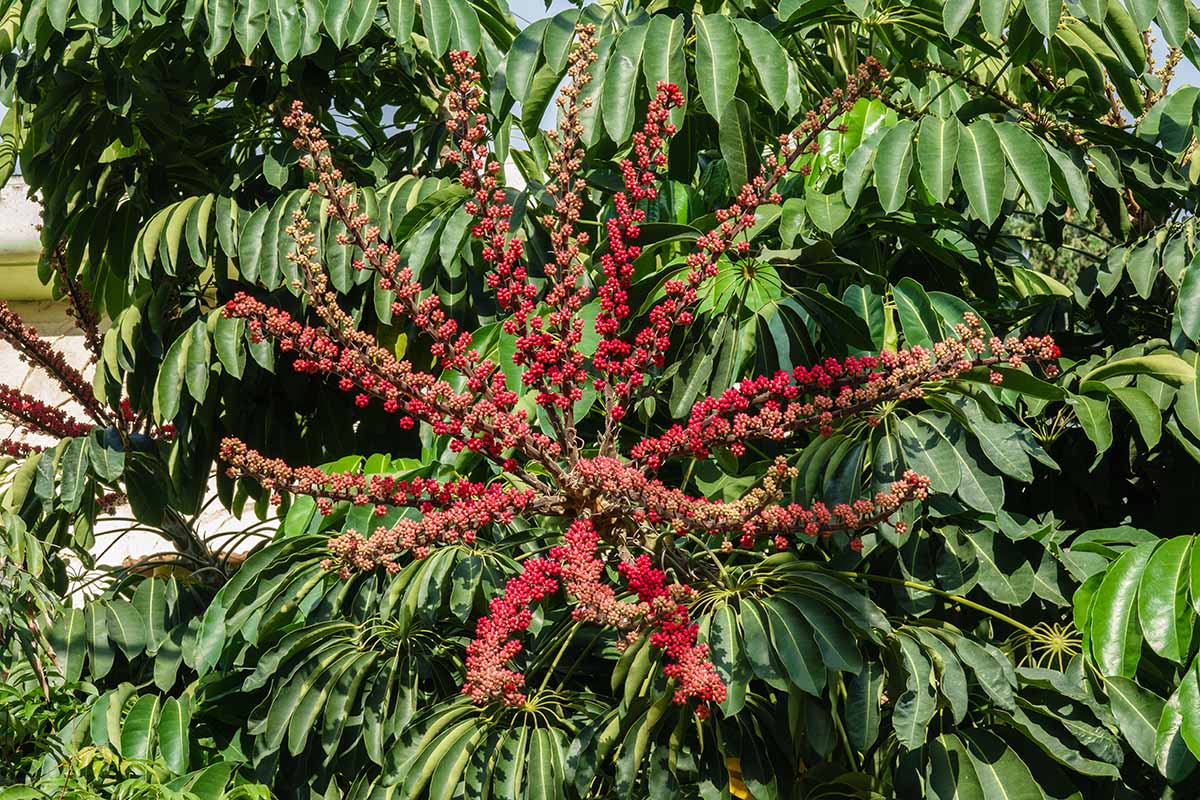
What species are you growing? Are you hoping to encourage yours to flower? Or are you wondering how to care for a plant that sent out surprise blossoms? Let us know in the comments section below.
If you want to enjoy even more blooming houseplants, we have a few guides to common species that will flower in the right conditions, including:
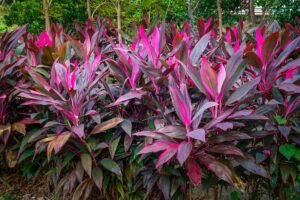
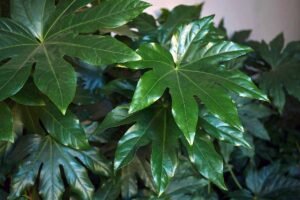

My 20 year old schefflera is blooming indoors. Its never happened before. I’m in Minnesota. It’s pretty exciting.
Hi Karen, it’s beautiful. That’s so exciting! How much sun do you keep yours in?
Omg. I’m so excited! My 4 year old umbrella plant put out a sweet little branch of flowers! I didn’t even know that they could flower! What an awesome little surprise from my happy girl! 😊